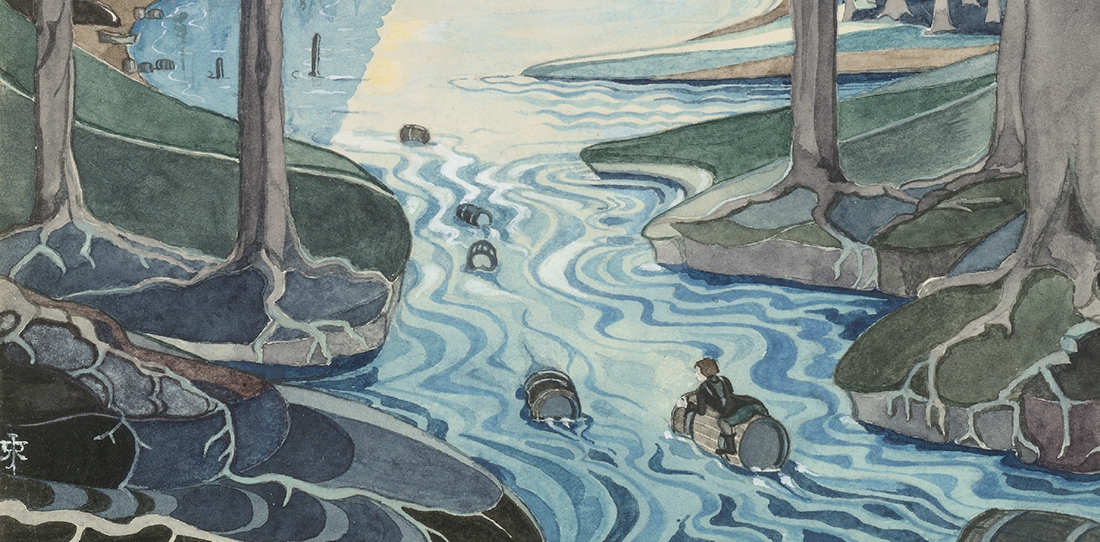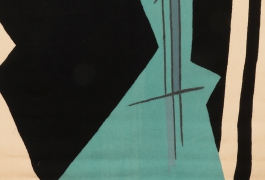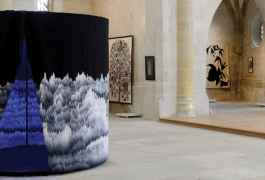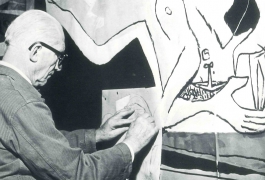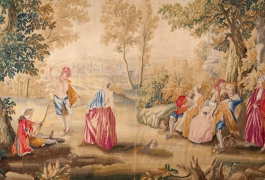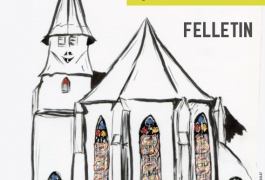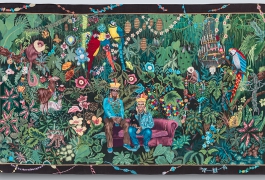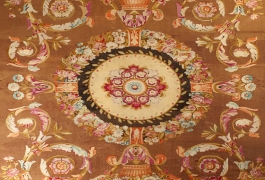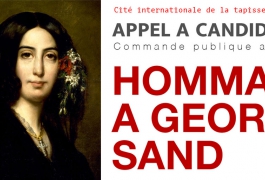The origins of the project
The fantasy world of J. R. R. Tolkien to be woven in Aubusson tapestry: a project emerged from the will of creating a new tapestry wall-hanging with a literary narrative.
Christopher Tolkien, the son of The Lord of the Rings author J.R.R. Tolkien, has put a lot of work and effort throughout his life into honouring and promoting his father’s monumental work in all its richness, and as literary executor, he notably edited and published the Silmarillion manuscript.
In 2010, the Scientific and Cultural Project for the museum at the heart of the nascent Cité internationale de la tapisserie was drafted by the curator, and he came up with the idea for The Nave of Tapestries. The question arose of what it would be like to create a 20th century wall hanging based on a renowned literary work, as was the custom in the 16th or 17th century. J.R.R. Tolkien’s stories seemed an obvious choice for this. A young apprentice weaver, Thomas Mondon, began drafting a document listing all the different illustrators of Tolkien’s written works, including the author himself. In 2012, an interview with Christopher Tolkien in the French newspaper Le Monde provided the team from the Cité de la tapisserie with a breakthrough: the project should honour the memory and illustrative works of J.R.R. Tolkien himself.
At the end of 2012, the director of the Cité internationale de la tapisserie, Emmanuel Gérard, contacted Dominique Bourgois, publisher of the French version of The Lord of the Rings (Christian Bourgois publishing house) in France, and emphasised the relevance of weaving the illustrative works of J.R.R. Tolkien that accompanied his novels, in the Aubusson tapestry tradition. The sheer size of the work would invite visitors to immerse themselves in the fantasy world of J.R.R. Tolkien as never before. The publisher was taken with this idea, as was most of the Tolkien family subsequently.
At the end of 2013, Christopher and Baillie Tolkien received the Cité’s director, Emmanual Gérard, and curator, Bruno Ythier, at their house in Haute-Provence. They said that aside from an exhibition of Tolkien’s original pictures by the Bodleian Library in Oxford, it was the first time that anyone had expressed a wish to showcase the illustrative work of their father and father-in-law. They asserted that in their eyes, the idea of using tapestry to present this illustrative work was perfect. 14 drawings and watercolours by J.R.R. Tolkien were jointly selected by the Tolkien family and the Cité de la tapisserie as subjects for tapestries or carpets. This then led to negotiations with the Tolkien Estate’s lawyer, Cathleen Blackburn. At the end of 2016, this resulted in an agreement signed by Christopher Tolkien for the Tolkien Estate, and French senator Jean-Jacques Lozach for the Cité internationale de la tapisserie.
Presentation of the project:
Timeline for the "Aubusson weaves Tolkien" project:
- End of 2013: meeting with Christopher and Baillie Tolkien, start of negotiations;
- End of 2016: agreement signed with the Tolkien Estate;
- 25 January 2017: official launch of the project and start of the digitisation process for the 14 original works at the Bodleian Library in Oxford;
- Spring of 2017: the weaving committee establishes the technical aspects (colour sampling, size of tapestries, selection of weaving thickness, etc.), work is carried out on the first tapestry cartoon (real-size painted paper-board model);
- Summer 2017: presentation of the project and the first cartoon in a reconstructed cartoon-making workshop;
- Autumn 2017: weaving starts and progress can be followed at the Cité de la tapisserie;
- Start of spring 2018: projected date for the first ‘tombée de métier’ (important moment when the tapestry is cut from the loom);
- 2021: weaving comes to an end, presentation of the entire tapestry work.

